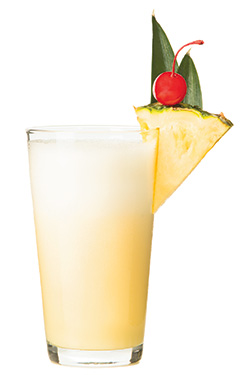Commercial blenders assist with food prep or concocting blended beverages. These units offer much versatility while occupying little space due to capabilities beyond blending. A blender can perform the functions of food processors, nut grinders and mixers, saving counter space by replacing these appliances with one single appliance.
 Most blenders consist of several key parts, including a steel blade, a container with a lid and a motor. Some blenders also have an accelerator tool, or tamper, which aids in processing food by eliminating cavitation. Staff can use the tamper to push food through the blade for complete processing.
Most blenders consist of several key parts, including a steel blade, a container with a lid and a motor. Some blenders also have an accelerator tool, or tamper, which aids in processing food by eliminating cavitation. Staff can use the tamper to push food through the blade for complete processing.
Foodservice operators can choose from a variety of blender types. For example, operators primarily use beverage blenders to make smoothies, milkshakes and other blended drinks. This type combines a container and blade designed to fully process ice-based drinks to the desired consistency. Added power helps process ingredients quickly and contributes to the unit’s longevity. Some beverage blenders come with programmability, which provides drink repeatability and helps improve speed of service.
Chefs look to multipurpose blenders for creating soups, purees and salad dressings as well as creating different textures from sauces to foams.
As their name implies, food blenders process food ingredients. These units combine a container and blade design to fully process raw foods and vegetables. Container capacities for this type range from 32 ounces up to a gallon in either a seven-inch-by-seven-inch or nine-inch-by-nine-inch footprint. Food blender containers come in stainless steel and polycarbonate. Depending on the unit, bowls feature brushed stainless steel, gray polycarbonate plastic or clear polycarbonate plastic construction.
Ice dispenser/blender combinations allow ice to be dispensed directly in predetermined quantities into a blending container. These shaver blenders have a hopper on top that can be filled with ice, while the jar below has flavoring or a drink mix. The unit shaves the exact amount of ice needed and automatically measures it into the jar. This type is most often used at resorts, pools and places that serve large quantities of frozen drinks.
Traditional blenders have a single blade assembly at the bottom of the mixing container in varying forms of steel and stainless steel. Blades are categorized as ice, wet, and advanced or heavy-duty. Each has a slightly different shape for varying tasks. For example, operators typically use ice blades for frozen drinks and wet blades for food prep. Advanced blades have a unique shape for more aggressive blending. Portable immersion blenders have a removable blade affixed to the shaft, and operators can use these with any food container.
Blenders require 120V AC power at 50/60 Hz, but some are available in 220V/240V models. These units have either one-, two- or variable-speed configurations and motors ranging from ½ to 4.2 horsepower. Controls vary depending on the model and include touch pads, touch pads with various speed options, toggle switches and paddle switches.
Jar sizes have increased with food production sizes. Blender capacities range from 48 to 64 ounces, with 128-ounce sizes also available. The wider the blender container, the more volume is needed to get the mix to flow properly.
Certain blender units, designed specifically for coffee and smoothie shops, have timers that allow staff to pursue other tasks while drinks are mixed to the proper consistency.
Blenders are available that perform at a decibel level consistent with most conversations, eliminating the need to talk over the noise. Newer container designs include a built-in dripless spout that improves processing and pourability. BPA-free containers are durable and reusable, which eliminates the need to frequently replace the container.
Some new food blenders include a one-touch chopping feature with speed control, which thoroughly chops solid ingredients. This chop feature also keeps the blender from cavitating.










